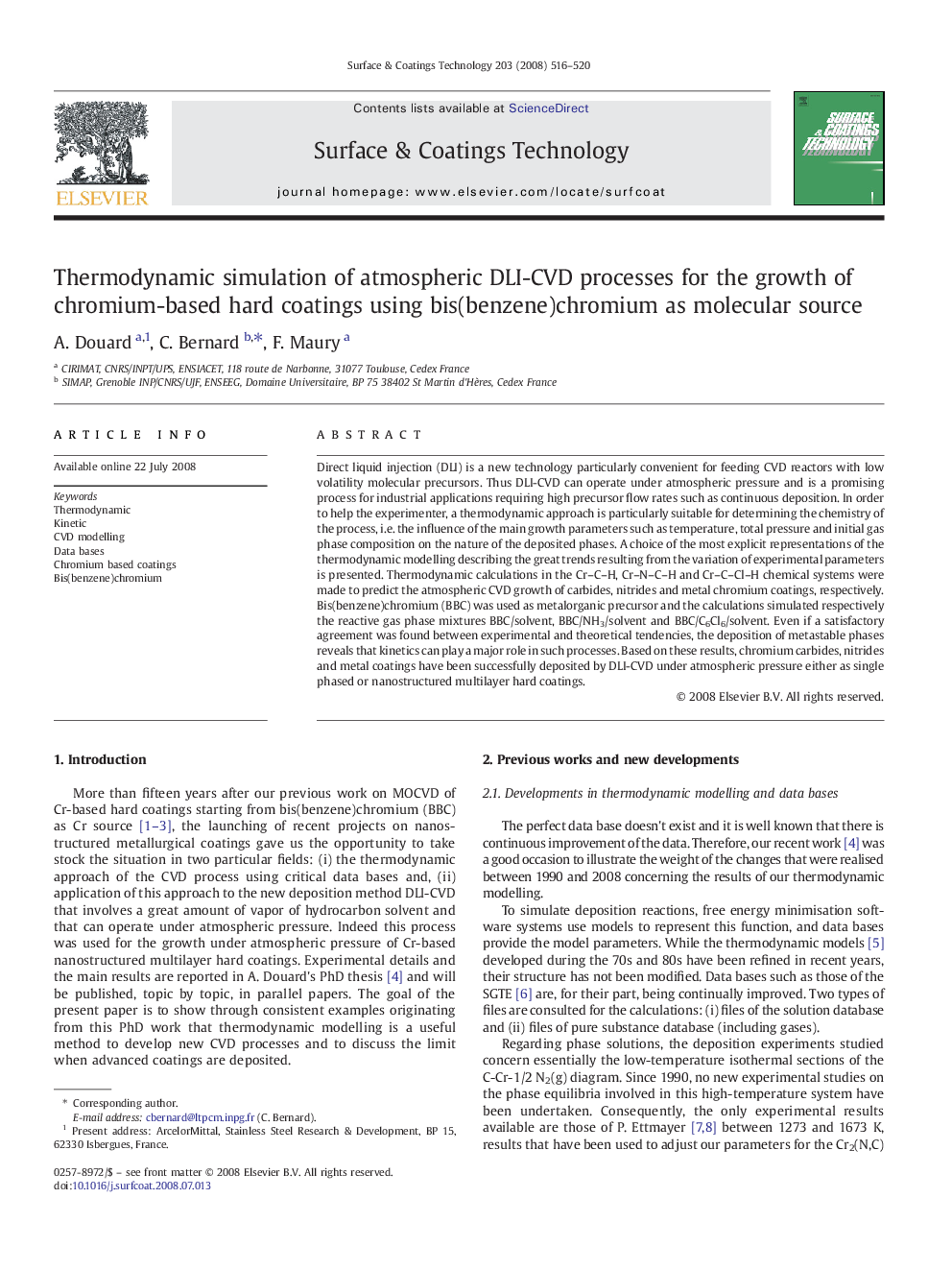| Article ID | Journal | Published Year | Pages | File Type |
|---|---|---|---|---|
| 1659988 | Surface and Coatings Technology | 2008 | 5 Pages |
Direct liquid injection (DLI) is a new technology particularly convenient for feeding CVD reactors with low volatility molecular precursors. Thus DLI-CVD can operate under atmospheric pressure and is a promising process for industrial applications requiring high precursor flow rates such as continuous deposition. In order to help the experimenter, a thermodynamic approach is particularly suitable for determining the chemistry of the process, i.e. the influence of the main growth parameters such as temperature, total pressure and initial gas phase composition on the nature of the deposited phases. A choice of the most explicit representations of the thermodynamic modelling describing the great trends resulting from the variation of experimental parameters is presented. Thermodynamic calculations in the Cr–C–H, Cr–N–C–H and Cr–C–Cl–H chemical systems were made to predict the atmospheric CVD growth of carbides, nitrides and metal chromium coatings, respectively. Bis(benzene)chromium (BBC) was used as metalorganic precursor and the calculations simulated respectively the reactive gas phase mixtures BBC/solvent, BBC/NH3/solvent and BBC/C6Cl6/solvent. Even if a satisfactory agreement was found between experimental and theoretical tendencies, the deposition of metastable phases reveals that kinetics can play a major role in such processes. Based on these results, chromium carbides, nitrides and metal coatings have been successfully deposited by DLI-CVD under atmospheric pressure either as single phased or nanostructured multilayer hard coatings.
